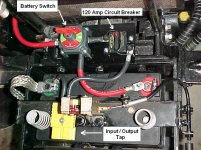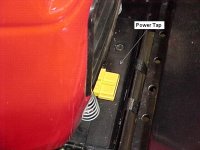BGL990
Gold Member
2300 watts out = 2300 watts in, assuming 100% efficiency. In reality it will be somewhat worse than that. Let's just say 2500 watts in.
power = voltage x current
On the input side:
2500W = 12V x current, or
current = 2500 / 12 = 208A
So, yes it's only 20A out, but will be over 200A from the battery under full load. Battery won't last long at that rate. Of course it would be very rare to need that much power continuously and the extra capacity doesn't hurt in case you need to start up something inductive like a big motor.
/forums/images/graemlins/cool.gif
power = voltage x current
On the input side:
2500W = 12V x current, or
current = 2500 / 12 = 208A
So, yes it's only 20A out, but will be over 200A from the battery under full load. Battery won't last long at that rate. Of course it would be very rare to need that much power continuously and the extra capacity doesn't hurt in case you need to start up something inductive like a big motor.
/forums/images/graemlins/cool.gif


